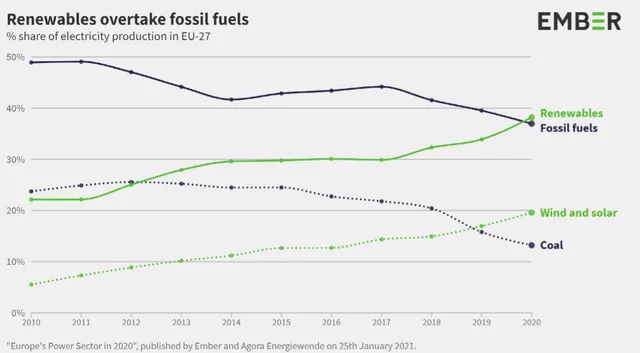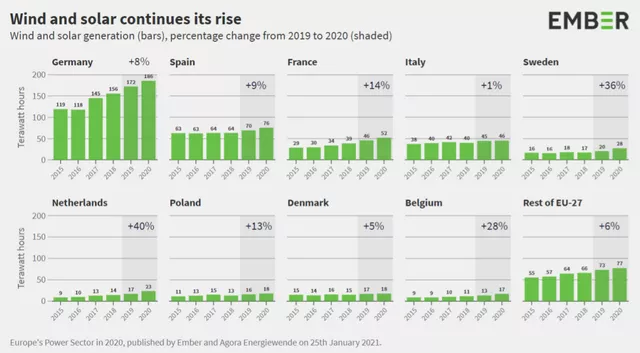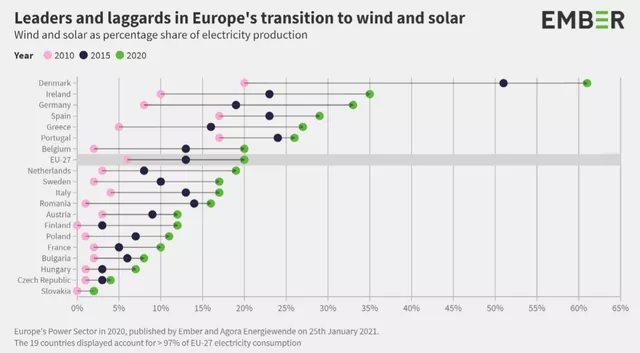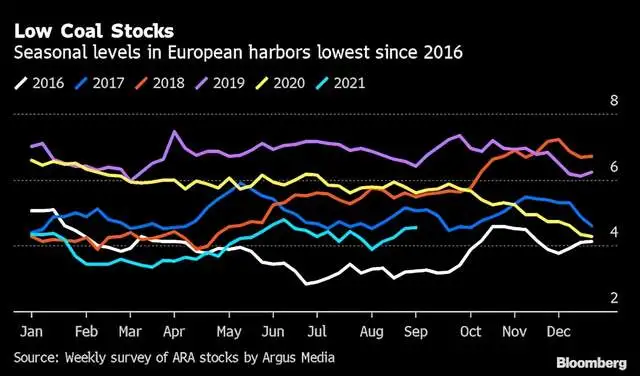The Outside World: Europe’s Energy Crisis and New Energy Transformation
In the global push for renewable energy and carbon reduction, Europe has been one of the most aggressive proponents. However, this has led to a sharp increase in household and business electricity rates. Even with electricity costs steadily rising throughout 2021, September saw a more noticeable surge, with wholesale prices in already expensive Germany rising nearly 50%. As winter approaches and energy demand increases, power interruptions and fuel shortages may become a reality.
The UK’s largest energy companies have already requested emergency assistance from the government. Last month, five smaller suppliers went bankrupt without being able to fulfill their energy supply commitments to businesses, which could lead to further spread of such situations.
In response, the Spanish government has passed emergency legislation to limit energy company profit margins and reduce the price hikes. Italy may introduce a €4.5 billion home support plan, while France has provided energy subsidies for millions of low-income families.
Figure 1 shows the escalating electricity prices in Europe, with Germany’s Cal 2022 benchmark electricity continually breaking through the ceiling.
Data source: https://www.cmegroup.com/markets/energy/electricity/german-power-baseload-calendar-month.quotes.html
The main factors leading to Europe’s unsustainable energy industry are the accumulation of a number of reasons, with the global natural gas shortage being the core issue. Since the beginning of 2021, natural gas prices in Europe have doubled. While natural gas accounts for only 20% of Europe’s energy supply, some countries are even more dependent on it, such as Germany, where half of households rely on natural gas for heating.
As Europe faces an energy crisis, efforts are being made to transition to new energy sources.# The European Power Sector in 2020
The report “The European Power Sector in 2020” clearly shows the transformation of European power: renewable energy surpassed fossil fuel generation, with wind and solar energy accounting for 20%.

From the data, these achievements also support the flourishing development of green energy, which is very impressive. The governments of most European countries have reduced traditional energy generation and increased investment in wind power to achieve climate targets. From the energy structure, carbon reduction is effective but with risks. Wind energy is highly dependent on weather conditions. Exceptionally low wind speeds mean wind power production in many parts of Europe is 45% lower than the five-year average.
Note: Wind energy has always been the largest electricity producer in Germany, but its share in the German power grid decreased from 29% to 22% in the first half of 2021 due to the continuous challenge of energy supply by the weather.

Analysis of Natural Gas Shortage
There are several reasons for the natural gas shortage:
1) The natural gas shortage is largely caused by the weather.
The unusually cold winter in Europe in 2020 caused significant consumption of European natural gas reserves. Typically, natural gas reserves are replenished in the spring and summer to prepare for the next winter. However, Europe experienced its coldest April in twenty years, leaving natural gas stocks low.
2) Russia’s supply attitude
Russia’s Gazprom provides about one-third of Europe’s natural gas, but this year it has stubbornly refused to increase spot natural gas supplies.
3) Issues with alternatives
The global demand for liquefied natural gas (LNG) has been rapidly growing, and the rapid growth of demand in Asia has created a tense supply situation. The import of LNG in 2021 has significantly decreased compared to 2020.
4) Can coal be a solution?
 Nowadays, coal prices are frequently hitting historic highs, partly due to the natural gas crisis and also because of the increasingly strict climate change policy in the EU. The EU carbon market is experiencing an unprecedented surge in prices, which have been hitting new highs since 2021, and this trend may continue.
Nowadays, coal prices are frequently hitting historic highs, partly due to the natural gas crisis and also because of the increasingly strict climate change policy in the EU. The EU carbon market is experiencing an unprecedented surge in prices, which have been hitting new highs since 2021, and this trend may continue.

In summary, I believe that this energy crisis is a great challenge to Europe’s low-carbon goals. In the current financial environment, commodities are already on an upward trend. If this is reflected in residents’ daily electricity and heating usage, I don’t think it bodes well for the long-term development of electric vehicles in Europe. We still need to observe what will happen this winter.
This article is a translation by ChatGPT of a Chinese report from 42HOW. If you have any questions about it, please email bd@42how.com.